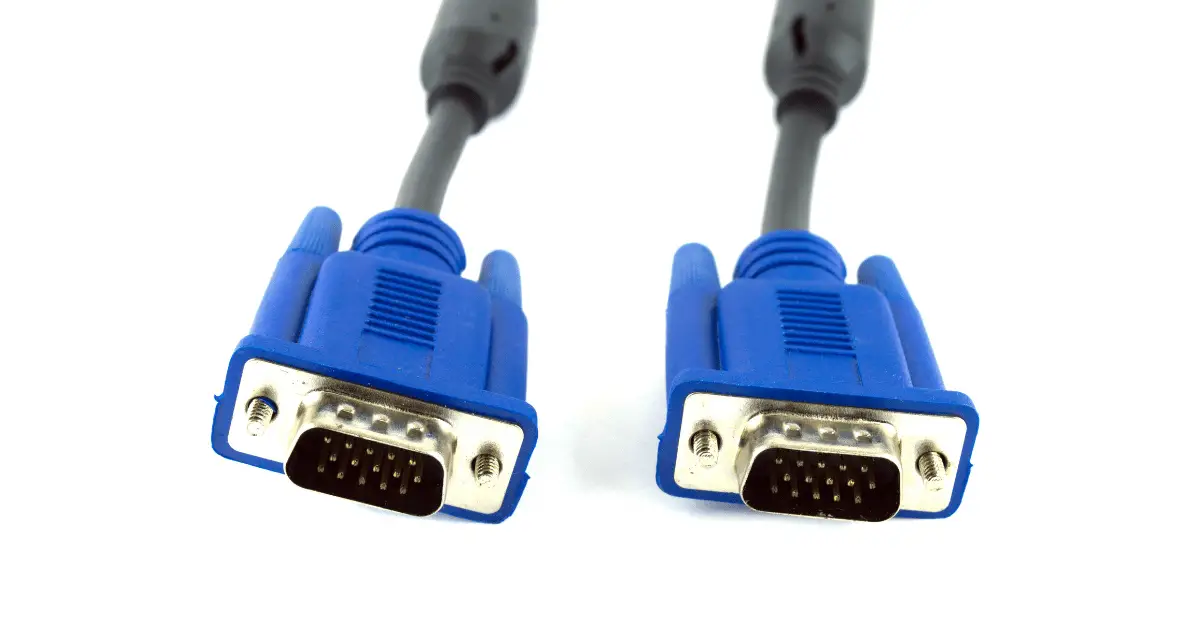Connecting a projector to a laptop is a common requirement, especially for presentations or movie nights. However, some laptops may not have a VGA port, which can make it difficult to connect the projector. In such cases, you can use alternative methods to connect your laptop to the projector. In this article, we will discuss how to connect a projector to a laptop without a VGA port, including the different methods and steps involved.
Table of Contents
How to connect projector to laptop without VGA port?
Projectors are a great way to display presentations or movies, and laptops are a popular device to use for this purpose. However, sometimes you may encounter a problem when your laptop does not have a VGA port, which is commonly used to connect it to a projector. But don’t worry, there are several alternative ways to connect your laptop to a projector without a VGA port. In this article, we will explore some of the best methods to connect a projector to a laptop without a VGA port.
Step by Step Guide to connect projector to laptop without VGA port
Sure, here is a step-by-step guide on how to connect a projector to a laptop without a VGA port:
- Check the available ports on your laptop: Before you begin, make sure to check the available ports on your laptop. If your laptop doesn’t have a VGA port, you may have one or more of the following ports: HDMI, DisplayPort, USB Type-C, or Thunderbolt.
- Check the available ports on your projector: After checking your laptop’s ports, you need to check the available ports on your projector. Most modern projectors come with multiple ports, including HDMI and VGA.
- Choose the right cable: Depending on the ports available on your laptop and projector, you need to choose the right cable. If both your laptop and projector have an HDMI port, you can use an HDMI cable to connect them. If your laptop has a USB Type-C or Thunderbolt port, you can use a USB Type-C to HDMI adapter or a Thunderbolt to HDMI adapter. If your laptop has a DisplayPort, you can use a DisplayPort to HDMI adapter.
- Connect the cable: Once you have the right cable, connect one end of the cable to your laptop and the other end to your projector. Make sure to connect the cable to the correct port on both devices.
- Switch to projector mode: After connecting the cable, switch your projector to the correct input source. Most projectors have a button or a menu option to switch input sources. Choose the correct input source based on the port you used to connect your laptop.
- Adjust the display settings: Once your laptop and projector are connected, you may need to adjust the display settings on your laptop. Go to your laptop’s display settings and choose the correct resolution and display mode for your projector.
- Test the connection: Finally, test the connection by playing a video or a presentation on your laptop. If everything is set up correctly, the content should be displayed on your projector.
By following these steps, you should be able to connect your laptop to a projector without a VGA port.
FAQ
Q: Can I connect my laptop to a projector without an HDMI port?
A: Yes, you can use a USB to HDMI converter or a USB-C to HDMI adapter to connect your laptop to the projector.
Q: Do I need any special software to connect my laptop to a projector?
A: In most cases, you do not need any special software to connect your laptop to a projector. However, some projectors may require drivers or software to be installed on your laptop. Check the user manual or the manufacturer’s website for more information.
Q: Can I connect multiple projectors to my laptop?
A: It depends on your laptop’s graphics card and the number of available ports. Most laptops support dual monitors, which means you can connect two projectors or one projector and one monitor. However, if you need to connect more than two projectors, you may need to use a splitter or a specialized graphics card.
Q: Why is my laptop not recognizing the projector?
A: There are several reasons why your laptop may not recognize the projector, such as a faulty cable or adapter, outdated drivers, or incorrect display settings. Try troubleshooting the issue by checking the connections, updating the drivers, or adjusting the display settings.
Q: How do I adjust the resolution on my laptop to match the projector?
A: To adjust the resolution on your laptop, go to the display settings and select the resolution that matches the native resolution of the projector. You can also adjust the screen size and orientation to fit the projector’s aspect ratio.
Conclusion
In conclusion, connecting a projector to a laptop without a VGA port may seem daunting at first, but it is actually quite easy. With the right adapter or cable, you can easily connect your laptop to your projector and enjoy your content on a larger screen. It is important to ensure that the adapter or cable you purchase is compatible with both your laptop and projector to avoid any compatibility issues. With the step-by-step guide and tips provided in this article, you should be able to successfully connect your projector to your laptop without a VGA port.

